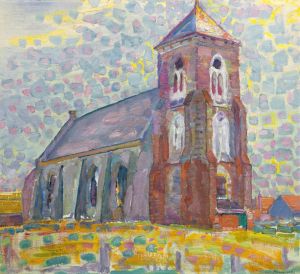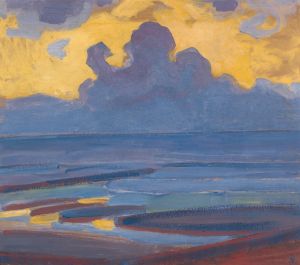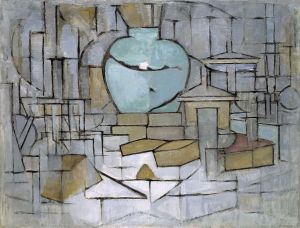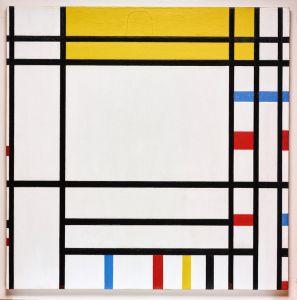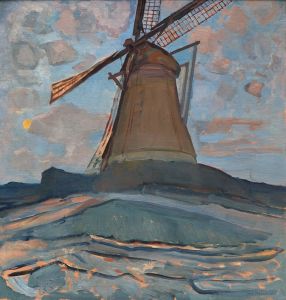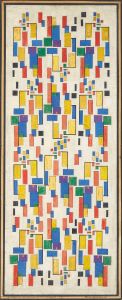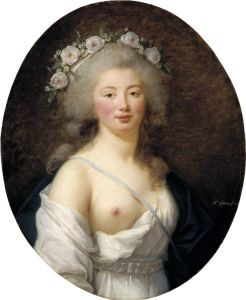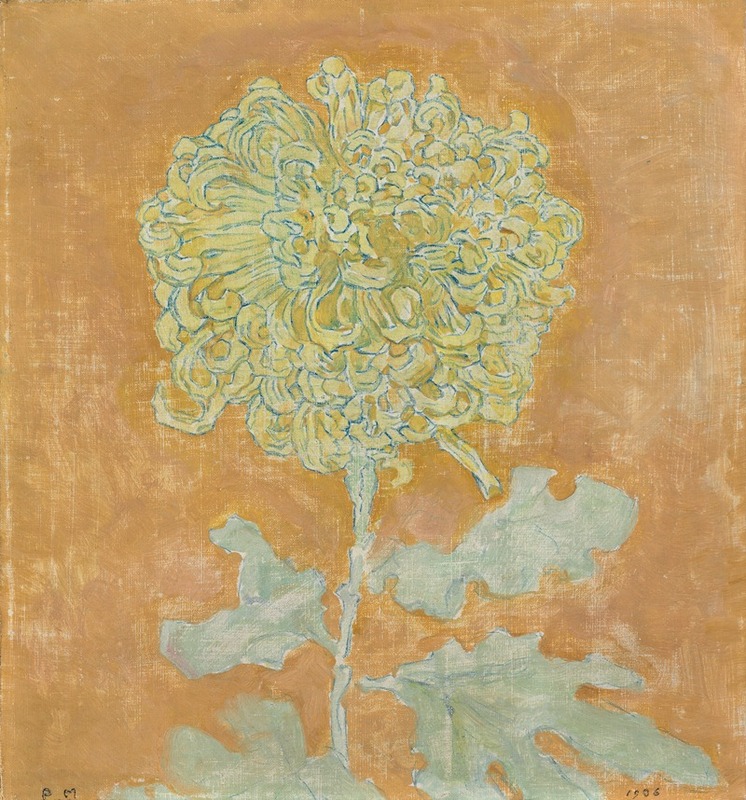
Chrysanthemum
A hand-painted replica of Piet Mondrian’s masterpiece Chrysanthemum, meticulously crafted by professional artists to capture the true essence of the original. Each piece is created with museum-quality canvas and rare mineral pigments, carefully painted by experienced artists with delicate brushstrokes and rich, layered colors to perfectly recreate the texture of the original artwork. Unlike machine-printed reproductions, this hand-painted version brings the painting to life, infused with the artist’s emotions and skill in every stroke. Whether for personal collection or home decoration, it instantly elevates the artistic atmosphere of any space.
Piet Mondrian, a Dutch painter known for his contribution to the De Stijl art movement and his development of a non-representational form he termed "neoplasticism," is celebrated for his abstract works that emphasize simplicity and geometric forms. However, before Mondrian fully embraced abstraction, he created several works that reflected his interest in nature and traditional subjects. One such work is "Chrysanthemum," which showcases his early style and exploration of natural forms.
"Chrysanthemum" is a painting that dates back to Mondrian's early career, a period when he was still deeply influenced by the natural world and the Impressionist and Post-Impressionist movements. During this time, Mondrian's work often featured landscapes, flowers, and other natural subjects, rendered with a focus on color and light. The painting "Chrysanthemum" exemplifies this phase of his artistic journey, capturing the delicate beauty of the flower with a keen attention to detail and a subtle use of color.
In "Chrysanthemum," Mondrian employs a more representational style compared to his later abstract works. The painting depicts the chrysanthemum flower with a sense of realism, highlighting the intricate structure of the petals and the vibrant hues of the bloom. This attention to detail and the use of color reflect Mondrian's early interest in the works of the Impressionists, who were known for their focus on light and color to capture the essence of their subjects.
The chrysanthemum, a flower often associated with themes of life and death in various cultures, is rendered with a sensitivity that suggests Mondrian's appreciation for the natural world. The painting's composition and execution demonstrate Mondrian's skill in balancing form and color, a skill that he would later refine and abstract in his neoplastic works.
While "Chrysanthemum" is not as widely recognized as Mondrian's later geometric compositions, it provides valuable insight into his artistic development and the evolution of his style. This painting is part of a broader body of work from Mondrian's early period, which includes other floral studies and landscapes that reveal his gradual shift towards abstraction.
Mondrian's journey from representational art to abstraction was marked by a continuous exploration of form and color. "Chrysanthemum" serves as a testament to his foundational years and his ability to capture the beauty of the natural world before he moved towards the radical simplification and abstraction that defined his mature style.
In summary, "Chrysanthemum" by Piet Mondrian is an important work that highlights the artist's early engagement with natural subjects and his exploration of color and form. It stands as a precursor to his later, more abstract works, offering a glimpse into the developmental stages of one of the 20th century's most influential artists. Through this painting, viewers can appreciate the roots of Mondrian's artistic evolution and his enduring fascination with the interplay between nature and abstraction.






